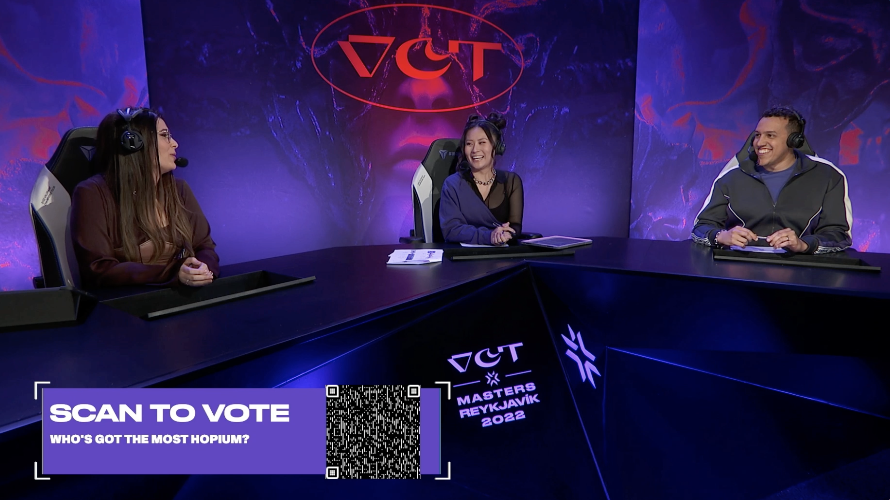
“I tell everybody this. I never want to go into a show without Tag{board}” said Stefan Richardson, Director, Global Broadcast at Riot Games. “When things go wrong, you can always go social. It’s the safety net that exists for us on so many different productions.”
As Stefan shared with us on #Storyteller at NAB, a safety net is a must have on any live production; you never know when a shark is going to chew through your Transatlantic high speed connector cable, or when your host desk is going to get stuck on a container ship in the Suez Canal never to be seen again.
The speed that it operates at allows us to do a lot of different pieces. It has really driven Valorant’s viewership in ways that we didn’t expect.
Stefan Richardson – Sr. Manager of Global Broadcast
In three years at Riot Games Stefan has lived through a lifetime of live broadcast situations, but the stories could continue for days with more than two decades of experience in the media industry. He says the key to surviving it starts with having a great crew that you can count on and then “it’s about being ready for anything that happens at any point in time”.
Riot Games interactive productions
Over the last few years the Riot Games production team has counted on Tagboard for real-time social interactivity, QR codes, and Twitter polls. The integration allows for an instant connection with their fanbase, and supports the company motto of “Player first. Fan first”.
“Every decision that we make is within the context of serving our players, and Tagboard allows that connectivity and a way for us to do it that we wouldn’t be able to do without it,” said Richardson.
The Riot team leans heavily on Tagboard for their Valorant productions, with a dedicated social media producer who’s “hunting the best stuff and allowing the fans to always know that their tweets are going to make it on and that their polling numbers are going to matter,” said Richardson. “It gives a flavor to the show and the speed at which we can put that stuff on the air really matters.”
Within a couple minutes after a match ends the broadcast will head to break where there is a countdown clock, music underneath, and a constant cycle of audience reactions from social channels. “People are talking about the match that just happened and it allows that story to keep going. So the connection to players and fans is huge,” said Richardson.
Tracking QR code analytics
A big connector of fans to interactive moments in their productions is the QR code. Riot uses the QR code to send viewers to Twitter Polls for voting with just a quick scan and click. They’ll spin up polls for sponsored segments and match reactions, and then display the results live on their broadcast through Tagboard. Not only do they see total vote count, but through Tagboard’s Production Analytics they can see when, where, and how their audience is interacting with their QR codes driving data backed decisions for sponsorship packages and editorial moments.
“It allows them {Business development team} to offer that kind of element out to sponsors. Saying ‘hey, we can get you really good numbers back. We can show you how many people are scanning this QR code. We can keep track of all that information.’ So it’s not just throwing darts,” said Richardson. “Then we can see what fans reacted to; how have they been using that QR code? How have our players and fans been working with it? And that allows us to tailor the show to do it better next time.”
The snuggly blanket for producers
The partnership with Riot Games creates interactive elements to build connections with their audience, and introduces production workflow efficiencies to build confidence with the production team.
“The speed that it operates at allows us to do a lot of different pieces. It’s really driven Valorant’s viewership in ways that we didn’t really expect,” said Richardson. “It’s the snuggly blanket for me as a producer”.
